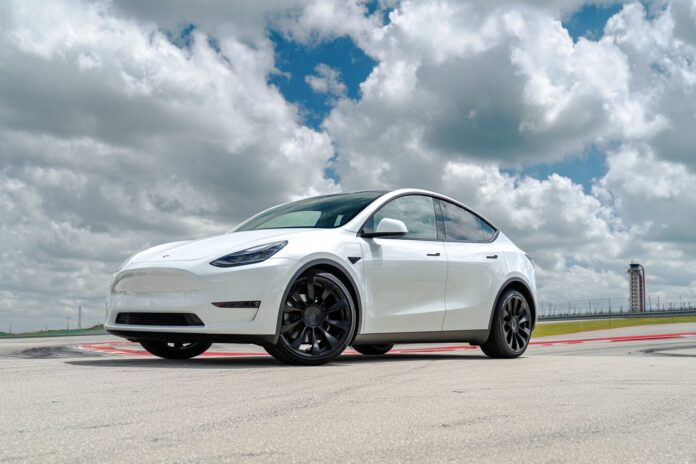Driving Into the Future: Tesla’s Big Autonomous Leap
On June 28, 2025, Tesla captured the imagination of consumers and industry experts alike by completing the world’s first fully autonomous car delivery. A new Model Y drove itself from Tesla’s Gigafactory in Texas directly to its new owner’s residence in downtown Austin. Most importantly, this remarkable achievement occurred without any human driver, safety monitor, or remote operator, showcasing the capabilities of Tesla’s cutting-edge Full Self-Driving (FSD) technology.
Because Tesla’s demonstration not only highlights the technological advancement behind autonomous vehicles but also sets a new standard for the automotive industry, industry insiders are intrigued by its implications. Moreover, this event supports Tesla’s commitment to innovation and safety, further bolstering its reputation as a leader in self-driving car technology. Videos of this historic journey, such as the detailed footage on YouTube, have provided additional transparency, reinforcing consumer confidence in autonomous systems.
What Really Happened: The Details Behind the Delivery
The journey, which lasted about 30 minutes, began at Tesla’s Austin factory. The vehicle smoothly navigated a range of challenging environments from crowded parking lots to busy highways, and finally to the urban streets of downtown Austin. Besides that, the delivery was executed with precision, demonstrating Tesla’s ability to manage complex routes seamlessly.
Most importantly, Elon Musk used social media to share live updates and video snippets of the autonomous Model Y in action. This approach not only generated widespread excitement but also offered a transparent view into the processes behind Tesla’s autonomous technology. Therefore, the integration of real-time data makes this event a significant milestone in the evolution of driverless vehicles, as evidenced by numerous reports, including those from Fortune and Engadget.
Why Is This Such a Big Deal?
This autonomous delivery transcends Tesla’s previous accomplishments, such as its robotaxi service that still necessitated a human supervisor. Because the Model Y’s delivery was completely unsupervised, it marks a significant departure from traditional logistics methods. Moreover, this development challenges conventional delivery models by substantially reducing both human intervention and associated costs.
Because the traditional delivery fee of $1,390 includes a substantial amount of manual logistics, Tesla’s shift could revolutionize the industry. Most importantly, it paves the way for more efficient, cost-effective vehicle distribution systems. In addition, experts argue that this innovation could resonate broadly, promising a future where autonomous delivery is not merely a novelty, but a standard in vehicle logistics. This topic has sparked discussions on various platforms including articles on Electrek.
Challenges and Unanswered Questions
Despite the historic nature of this event, important challenges and practical questions persist. For instance, what protocols are in place if the vehicle sustains damage en route or encounters unexpected road conditions? Additionally, concerns about the cleanliness of the vehicle after traversing multiple environments remain unresolved. Therefore, while the delivery was a triumph of technology, it has also sparked debates on how to maintain quality control and address unforeseen issues autonomously.
Because regulatory bodies are yet to fully embrace autonomous delivery systems, further scrutiny and detailed analysis are required before such services become commonplace. Moreover, other companies like Waymo and Cruise are also pushing the boundaries of driverless technology, though their focus remains on ride-hailing rather than direct vehicle delivery. These nuances indicate that regulatory adaptations and industry standards must evolve in parallel with technological advancements.
How Does Tesla’s Delivery Compare to Competitors?
Unlike competitors such as Waymo and Cruise, whose driverless operations are primarily confined to ride-hailing in urban environments, Tesla’s Model Y delivery showcased a full-scale autonomous operation covering diverse terrains. Most importantly, Tesla’s delivery emphasizes the capability to operate without human oversight, which sets it apart in terms of both innovation and commercial applicability.
Because traditional driverless services still require certain human interventions, Tesla’s breakthrough demonstrates a more progressive application of autonomous technology. In fact, reports from various sources, including Drive Tesla Canada, underline that Tesla has pushed the envelope further by enabling a seamless, supervisory-free operation. Therefore, this achievement is poised to be a catalyst in the drive towards fully automated transportation networks.
The Road Ahead: Will Autonomous Delivery Become the Norm?
Elon Musk’s vision for the future significantly relies on the success of these technological breakthroughs. Because this autonomous delivery aligns directly with his long-term goals, it is being closely monitored by both the industry and regulatory bodies. Most importantly, it questions whether such achievements are merely controlled demonstrations or the precursors to a wider application across Tesla’s distribution channels.
Besides that, if this model proves scalable and reliable, it could transform how vehicles are delivered in the future. The potential reduction in delivery time and costs, coupled with enhanced customer convenience, suggests a significant shift in established logistics paradigms. Consequently, industry experts believe that we are witnessing the early stages of a revolutionary change in the transportation sector, where autonomous technology becomes an integral part of everyday life.
Conclusion: A Glimpse Into the Future of Mobility
In conclusion, Tesla’s first fully autonomous car delivery not only demonstrates the practical capabilities of FSD technology but also heralds a new era for the automotive industry. Elon Musk’s bold move underscores the drive for innovation and efficiency, paving the way for broader adoption of autonomous solutions in various aspects of life.
Because of its potential to redefine logistics and customer service, this monumental event will undoubtedly be a focal point for future advancements in self-driving technology. With comprehensive coverage from multiple sources, including Fortune and Electrek, the journey of autonomous innovation is just beginning and will likely transform the automotive landscape in the years ahead.
References
- Fortune: Tesla delivers Model Y autonomously
- Engadget: Tesla’s First Fully Autonomous Delivery
- Electrek: Elon Musk claims Tesla delivered its first car fully autonomously
- Drive Tesla Canada: First Fully Autonomous Model Y Delivery



